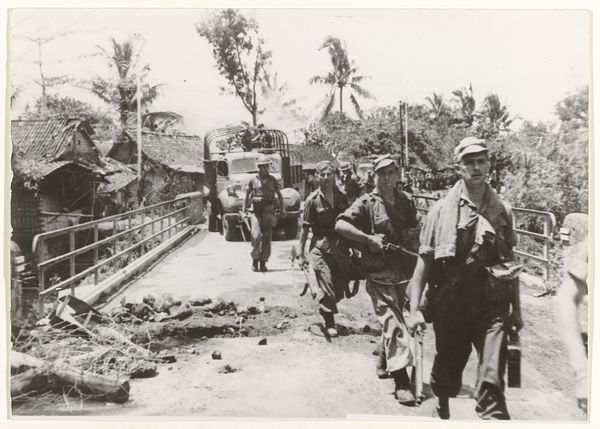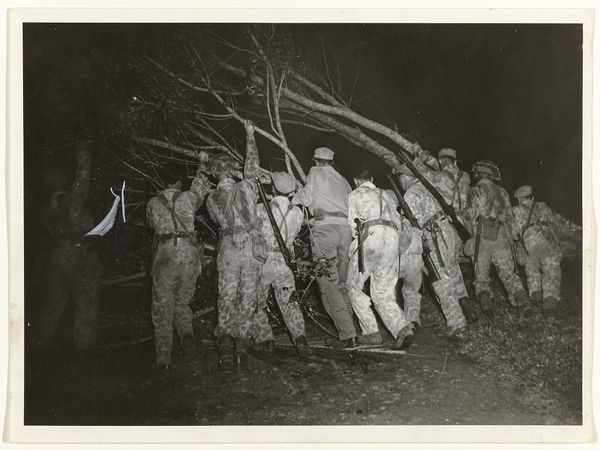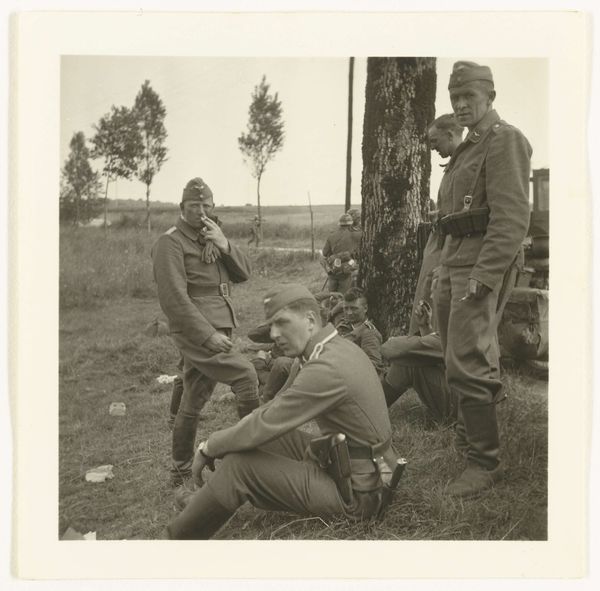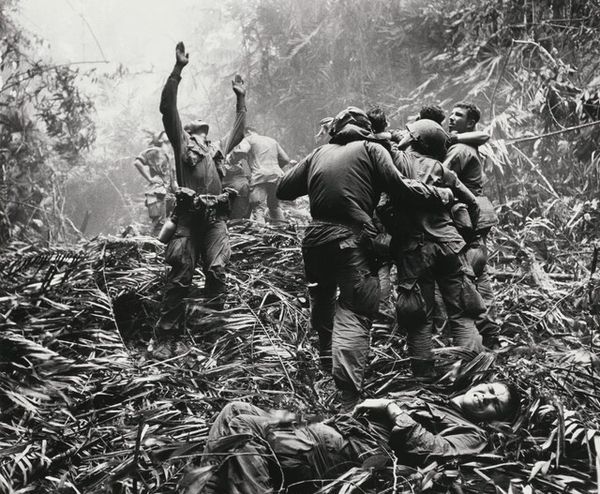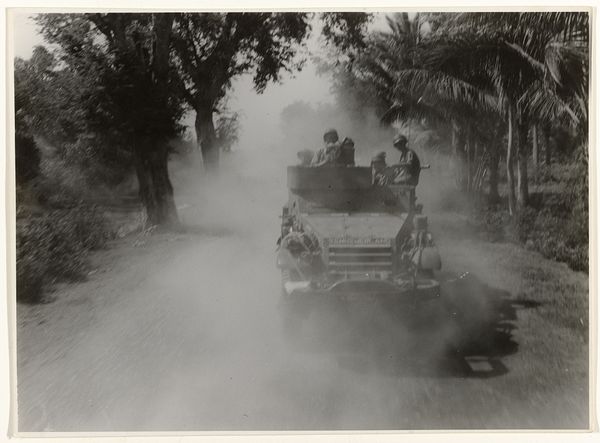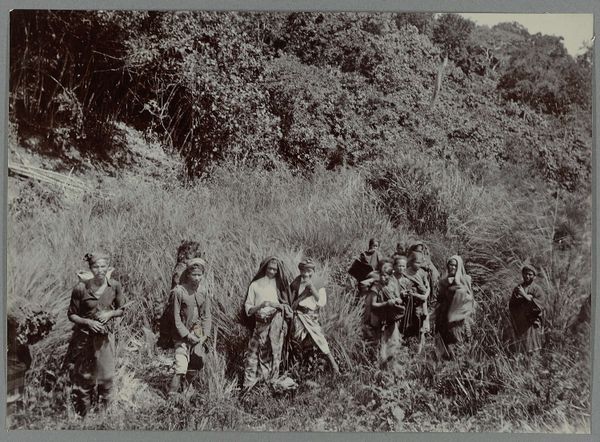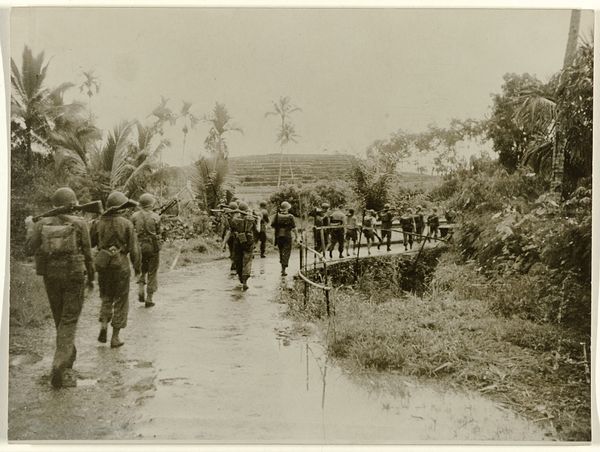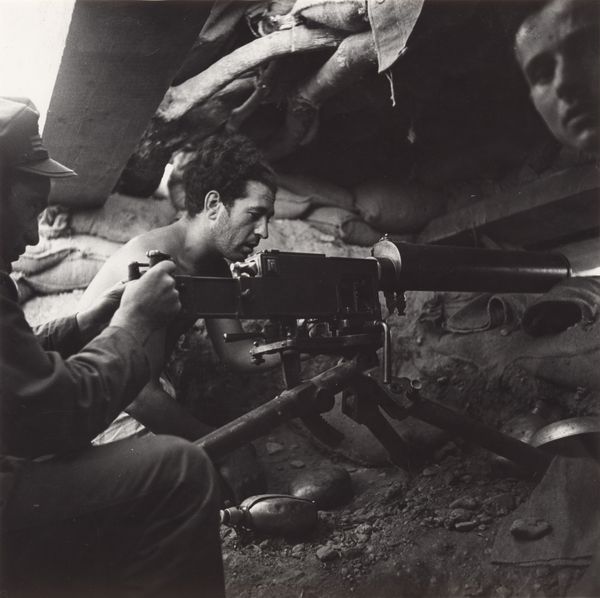
Dutch Soldiers Respond to Gunfire from a Sniper in Malang, Java 1947 - 1949
0:00
0:00
print, photography
#
dutch-golden-age
# print
#
landscape
#
outdoor photo
#
street-photography
#
photography
#
postcolonial-art
#
photojournalism
#
monochrome photography
#
realism
#
monochrome
Dimensions: height 15 cm, width 20 cm
Copyright: Rijks Museum: Open Domain
Curator: This photo, held at the Rijksmuseum, captures a stark moment of the Indonesian National Revolution. It's titled "Dutch Soldiers Respond to Gunfire from a Sniper in Malang, Java" and dates to sometime between 1947 and 1949. The Associated Press is credited as the photographer. Editor: The immediacy is gripping. The monochrome lends a historical weight, yet it feels intensely present. You see the soldiers, their varied postures hinting at tension, contrasting sharply with the almost idyllic backdrop – that large tree, the hint of a village. It speaks to a conflict both embedded within, and disrupting, everyday life. Curator: Precisely. The material conditions of this print, born from the apparatus of photojournalism, force us to confront the colonial project as a literal, concrete endeavor. How are we meant to grapple with the visible disparity in access and protection? Note the stark difference in uniforms, the weaponry, the expressions—or lack thereof—and the positioning of the Dutch soldiers relative to the obscured, prone figures at the base of the tree. Editor: Right, and it's not just the contrast in dress. The equipment itself tells a story. These rifles, these helmets, even the way they’re held speak of production, of industrial power wielded in a very particular way. Then you have these bodies flattened on the ground, almost camouflaged by their earth toned cloth. Curator: The photo implicitly indicts colonial power and its effects. The sniper, presumably Indonesian, operates from an unseen position. This reflects a crucial disruption to the narrative of colonial power, an insurgency born from resistance, demanding to be seen and heard, though presented, materially, in the aftermath. Editor: It brings into question who is behind the lens, how power dynamics shape these photographic records. This isn’t an objective view; it’s a crafted perspective, reflecting the colonial gaze even in depicting its challenges. Are we meant to sympathize? Condemn? The photograph demands we address the materiality of war and how it is consumed. Curator: Exactly. This photograph invites critical interrogation, dismantling narratives and highlighting the inherent instability and unsustainability of power structures rooted in exploitation and domination. It demands justice. Editor: Yes, by revealing the labour, the violence, and ultimately, the inherent instability of colonial enterprises, it prompts a reassessment of what it truly costs to maintain systems built on such inequalities. It still asks hard questions.
Comments
No comments
Be the first to comment and join the conversation on the ultimate creative platform.

